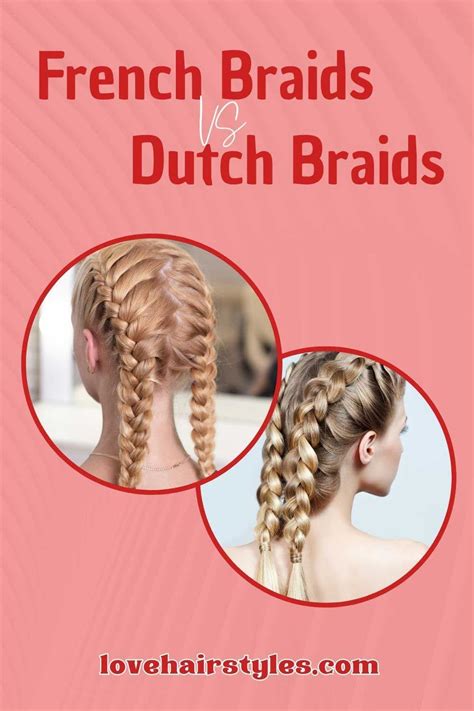Introduction
Braiding is a versatile hairstyling technique that can create a wide range of looks, from elegant and sophisticated to casual and playful. Two of the most popular braiding styles are Dutch braids and French braids. While both styles share some similarities, there are also some key differences between them.

Dutch Braids vs French Braids: A Comparative Analysis
Overview
- Dutch braids: Also known as inverted braids, Dutch braids are created by crossing the strands of hair over each other, creating a raised effect.
- French braids: French braids are created by crossing the strands of hair under each other, creating a flatter effect.
Construction
- Dutch braids: Dutch braids are typically thicker and more prominent than French braids. This is because the strands are crossed over each other, which creates more volume.
- French braids: French braids are typically thinner and flatter than Dutch braids. This is because the strands are crossed under each other, which creates less volume.
Appearance
- Dutch braids: Dutch braids have a more raised and textured appearance. They are often used to create intricate hairstyles, such as buns and crowns.
- French braids: French braids have a more subtle and elegant appearance. They are often used for more casual hairstyles, such as ponytails and braids.
Which Braid is Right for You?
The best braid for you will depend on your personal preferences and the occasion. If you are looking for a bold and eye-catching hairstyle, a Dutch braid is a great option. If you are looking for a more subtle and elegant hairstyle, a French braid is a better choice.
Step-by-Step Instructions for Dutch Braids and French Braids
Dutch Braids
- Start with dry, brushed hair.
- Divide your hair into three equal sections.
- Cross the right strand over the middle strand.
- Cross the left strand over the new middle strand.
- Continue crossing the strands over each other, adding hair from the sides as you go.
- Secure the end of the braid with a hair tie.
French Braids
- Start with dry, brushed hair.
- Divide your hair into three equal sections.
- Cross the right strand under the middle strand.
- Cross the left strand under the new middle strand.
- Continue crossing the strands under each other, adding hair from the sides as you go.
- Secure the end of the braid with a hair tie.
Tips for Perfect Braids
- Use a brush or comb to detangle your hair before braiding.
- Start with small sections of hair and gradually add more hair as you go.
- Keep the tension even throughout the braid.
- Secure the end of the braid with a clear hair elastic.
- Spray your braids with hairspray to help them stay in place.
Creative Applications of Braids
Braids are not just for hair. They can also be used to create a wide variety of other items, such as:
- Jewelry
- Accessories
- Home décor
- Clothing
- Art
FAQs
Can I braid my hair if it is short?
Yes, you can braid your hair even if it is short. However, the braids will be smaller and less prominent.
How often should I braid my hair?
Braiding your hair too often can damage it. It is best to braid your hair no more than once or twice a week.
Can I sleep in braids?
Yes, you can sleep in braids. However, it is important to use a satin pillowcase to prevent breakage.
How do I remove braids?
To remove braids, simply undo the hair elastic and gently pull the braid apart.
Conclusion
Dutch braids and French braids are two versatile and beautiful braiding styles. With a little practice, you can master both styles and create a wide variety of hairstyles. So next time you are looking for a new way to style your hair, reach for a braid!
Additional Resources
- How to Braid Your Hair: A Step-by-Step Guide
- 10 Creative Ways to Use Braids
- The Braid Bar: A Guide to Braiding
